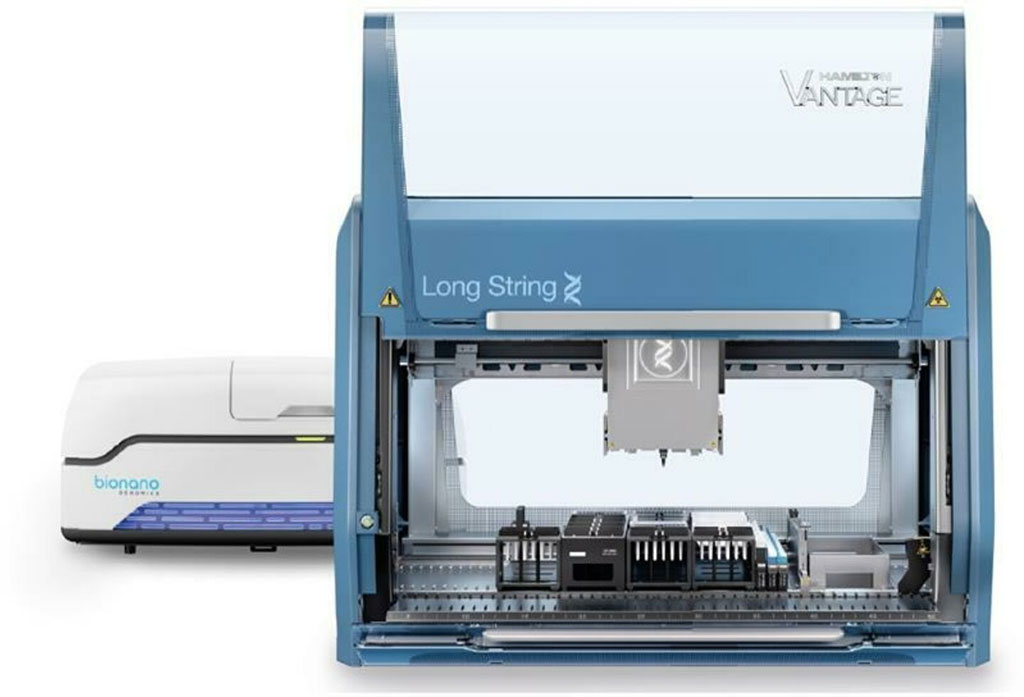Automated Extraction of Ultra High Molecular Weight DNA
Posted on 15 Jun 2022
Hamilton (Reno, NV, USA) and Bionano Genomics (San Diego, CA, USA) have announced the collaborative development of the Long String VANTAGE for the isolation of Ultra High Molecular Weight (UHMW) DNA for use in optical genome mapping (OGM).
Extraction of UHMW DNA of high quality and quantity is an important prerequisite and first step in Bionano’s sample preparation workflow. UHMW DNA extraction is generally performed manually by highly-trained and experienced laboratory personnel, limiting volume and application in routine sample preparation. By combining Hamilton’s long-standing expertise in automating genomic workflows through precision engineering of automated liquid handling solutions and consumables, and Bionano’s knowledge in extraction, enzymatic treatment and analysis of UHMW DNA molecules, the companies have developed the world’s first walk-away automation solution for UHMW DNA extraction.

Hamilton’s Long String VANTAGE is the first Assay Ready Workstation solution in Hamilton’s Long String Genomics product program and supports extraction of UHMW DNA at increased scale. Running the Bionano Prep SP Blood and Cell Culture DNA Isolation Kit, customers can obtain up to 12 UHMW DNA samples in less than four hours with high consistency and reproducibility. This workflow has the potential to double manual output, with increased confidence in sample yields and DNA quality. The companies plan to collaborate with select clinical research laboratories to test and further develop applications for the use of the Long String VANTAGE and the Bionano Prep SP kits, and anticipate commercial release of some of these workflows by the end of 2022.
“Hamilton is highly committed to empowering genomic sciences and diagnostics with innovative products and applications by collaborating with leading kit and technology providers,” said Dr. Martin Frey, CEO Hamilton Bonaduz AG. “Analyzing ultra-long DNA molecules by Optical Genome Mapping or genome sequencing technologies is providing insight into previously unresolved questions about genome biology and structural aberrations of the genome with clinical relevance. We are extremely pleased to partner with Bionano Genomics in addressing this innovation area.”
“The outcomes of this partnership with Hamilton are outstanding. They have shown an exceptional ability to improve workflows through the automation of UHMW DNA isolation, which consistently results in extremely long and pure DNA molecules that are suitable for use in OGM,” added Erik Holmlin, PhD, president and chief executive officer of Bionano Genomics. “We expect this innovation will significantly reduce time to results, reduce hands-on time and improve OGM performance by standardizing the process of UHMW DNA isolation. Bionano and Hamilton look forward to seeing customers adopt the Long String VANTAGE solution.”
Related Links:
Hamilton
Bionano Genomics













